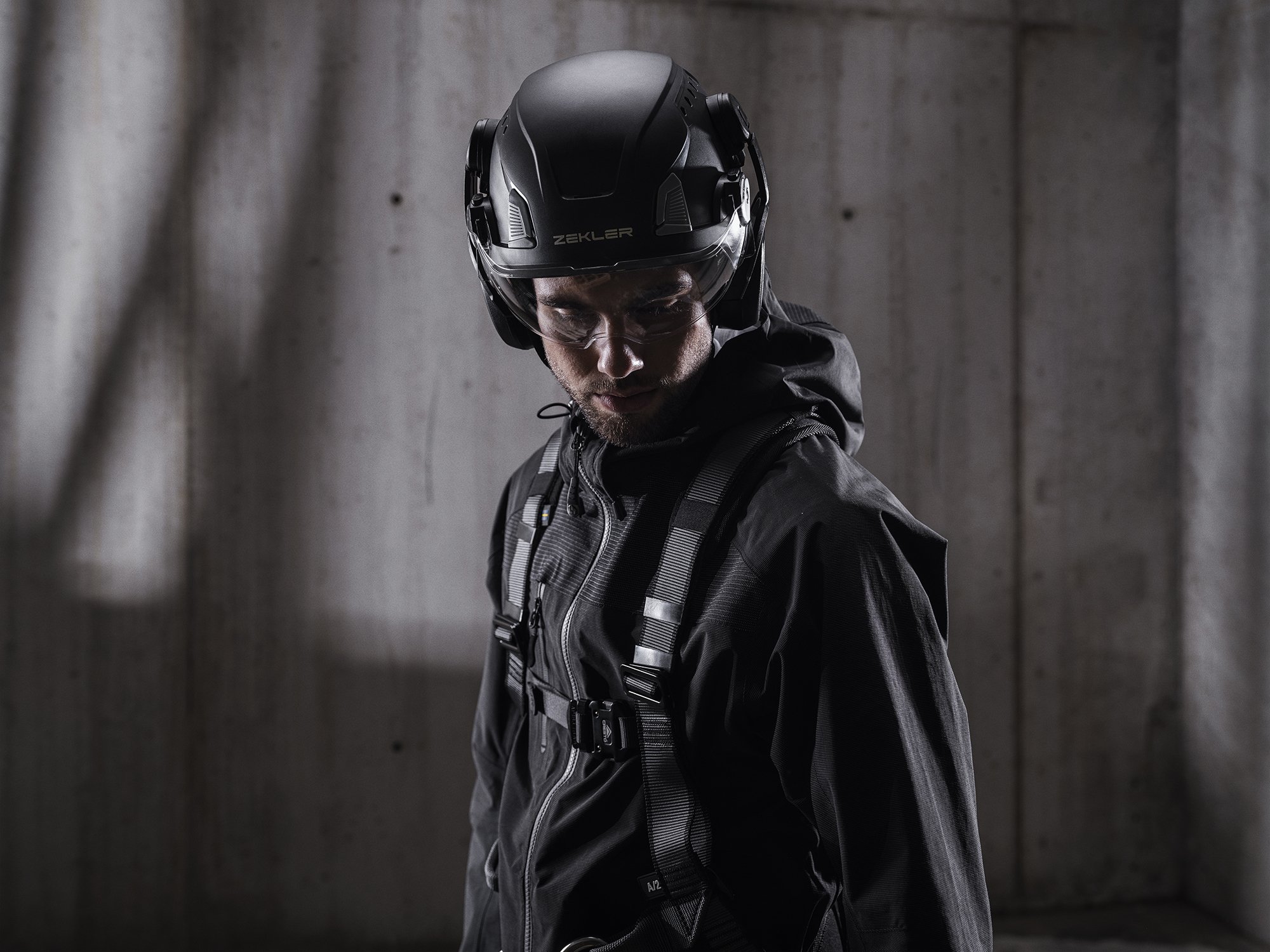FREQUENTLY ASKED QUESTIONS ABOUT SAFETY HELMETS
Find answers to your questions about safety helmets: choosing the right model, maintenance tips, and understanding safety standards. We're here to help you protect yourself effectively at work with accurate information and support.
Think of your safety helmet as more than just safety. With over 80% of users using accessories, and half with earmuffs, compatibility is crucial. Zekler Zone offers this with its click fasteners for easier use and a better overall experience. Choose between three models for optimal fit and protection, regardless of your profession. Learn more about our Zone safety helmets by CLICKING HERE.
All our safety helmets share the same basic features of simplicity, comfort, and accessory adaptation.
- ZONE STANDARD is dual-certified for ground and high-altitude use (EN 397 and EN 12492).
- ZONE MIPS includes the Mips® Safety System for extra protection against oblique impacts (EN 397).
- ZONE ELECTRO is a non-ventilated, electrically insulated industrial helmet for low-voltage environments (EN 397 and EN 50365).
No, our philosophy is to keep it simple. All accessories are mounted with click fasteners for quick and smooth adaptation.
We offer half visors with clear or gray lenses and full visors with clear lenses or mesh, to meet different work needs and preferences. You can find our visors under accessories by CLICKING HERE.
EN 397 is the industrial standard focusing on protection against impacts from above and has a chin strap that releases at a force between 150 and 250 N (Newtons) to avoid strangulation risk. EN 12492 is the standard for climbing helmets with protection against impacts from above and sides, and the chin strap must not release at a force below 500 N.
Yes, the straps are both replaceable and washable. Use solvent-free cleaning agents in warm water and easily replace them with the click fasteners.
Our helmets are one-size, adjustable from XS to XXL (53 to 63 cm) to fit different head sizes.
The headband of the helmet can be resized using the adjustment knob at the back of the helmet. On Zone Standard and Zone Electro, at the headband junction near the openings for earmuffs, there are two parts that can be snapped off and moved (two possible positions) to reduce the headband circumference. The headband can be adjusted vertically at the front of the helmet. Pull the headband down at the back to the two selectable usage positions.
The chin strap should pass under the chin and be adjusted so that it sits comfortably against the skin without choking or hanging loose. Use the adjustment clamps to shorten or lengthen the chin strap length. A properly adjusted chin strap contributes to the helmet's stability and safety during use.
It's important that the chin strap creates a Y-shape so it does not conflict with your earmuffs. Test the fit by opening your mouth wide. You should feel the helmet pull down. This indicates that the chin strap is correctly adjusted. More information can be downloaded on the Zekler Zone product pages, or CLICK HERE to read a more detailed article.
We offer 8 colors, and the choice can indicate the user's role, the company's color scheme, or personal preference. Companies often determine their color choice and significance at the workplace.
Zekler Zone is designed for 30mm quick attachment, making all standard-sized hearing protection fit. Certification with the helmet (brand and model) is in the earmuff.
Yes! Zekler Zone has plenty of space for earmuffs between the chin straps and no conflicts with the helmet shell or interior. This is a crucial aspect when choosing a safety helmet as it should be a secure protection against impacts as well as noise.
The visor protection, which is easily mounted with quick fasteners over the visor, protects the visor from dirt and scratches when folded up. This extends the life of the visor, benefiting both your wallet and the environment. CLICK HERE to read more about Zekler visor protection.
Normally, the safety helmet can be used for 3-4 years, but in tough work environments, the need for replacement may occur more frequently. Regularly check that the helmet has no visible damage. The helmet must be replaced at the first sign of wear, if it has been subjected to impacts, or if it no longer fits the wearer.
An unused helmet has a lifespan of 10 years if stored correctly, protected from UV light. The manufacturing date, which is crucial for assessing the helmet’s lifespan, is marked inside with two date clocks for month and year.



 Sweden
Sweden Norway
Norway